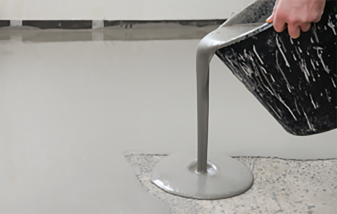
វិច្ឆិកា . 16, 2024 20:53 Back to list
redispersible polymer powder wiki
Understanding Redispersible Polymer Powder Applications and Benefits
Redispersible polymer powders (RDPs) are versatile additives that have found significant applications in a variety of industries, particularly in construction, adhesives, and paints. These fine, free-flowing powders are produced by spray-drying polymer emulsions. When mixed with water, they can easily rehydrate and revert to an emulsion, thereby restoring the original properties of the polymer. This unique characteristic makes RDPs invaluable in formulating products that require specific performance attributes.
Composition and Properties
RDPs are primarily composed of synthetic polymers such as ethylene-vinyl acetate, styrene-acrylic copolymers, and other polymeric materials. The choice of polymer affects the final product properties, such as flexibility, adhesion, and resistance to water and chemicals. The size of the particles, typically in the range of 1 to 100 micrometers, also influences the performance characteristics of the final formulation.
One of the most significant properties of RDPs is their ability to improve the mechanical strength of dry mix mortars. When added to cement-based products, RDPs enhance properties such as flexibility, impact resistance, and tensile strength. This leads to improved workability, allowing for easier application and finishing of construction materials.
Applications
The applications of redispersible polymer powders are diverse, spanning several sectors. In the construction industry, RDPs are widely utilized in tile adhesives, render coatings, and cementitious repair mortars. Their incorporation allows for improved adhesion to various substrates, reduces cracking, and provides resistance to moisture and frost. This is especially beneficial in construction projects that require durability under challenging conditions.
redispersible polymer powder wiki

In the realm of paints and coatings, RDPs are employed to enhance the adhesion and flexibility of water-based formulations. They contribute to better film formation and improved resistance to washing and abrasion, making coatings more suitable for both interior and exterior applications.
Moreover, RDPs have made significant inroads into the textile and paper industries, where they serve as binders to improve the strength and durability of materials. The high-performance characteristics of these powders are utilized in producing high-quality, long-lasting products.
Benefits
The use of redispersible polymer powders presents several advantages. Their easy incorporation into formulations can lead to the optimization of product performance, often leading to reduced production costs through improved efficiency and enhanced product lifespan. Additionally, RDPs are compatible with a wide range of other additives, allowing formulators to create bespoke solutions tailored to specific applications and requirements.
Furthermore, the environmental impact of using RDPs can be minimal, as many are produced from non-toxic materials and offer low volatile organic compounds (VOC) emissions. This aligns with the growing demand for sustainable and environmentally friendly construction materials and coatings.
Conclusion
Redispersible polymer powders stand out as a critical ingredient in a variety of formulations across multiple industries. Their unique ability to provide enhanced performance characteristics, coupled with ease of use and compatibility with other materials, makes them an essential component in modern construction, coatings, and adhesive solutions. As the demand for high-performance, eco-friendly products continues to rise, the role of RDPs is likely to become even more pronounced, shaping the future of material formulation and applications. Whether in construction, textiles, or coatings, the adaptable nature of redispersible polymer powders highlights their importance in creating innovative solutions tailored to an ever-evolving market.
-
Versatile Hpmc Uses in Different Industries
NewsJun.19,2025
-
Redispersible Powder's Role in Enhancing Durability of Construction Products
NewsJun.19,2025
-
Hydroxyethyl Cellulose Applications Driving Green Industrial Processes
NewsJun.19,2025
-
Exploring Different Redispersible Polymer Powder
NewsJun.19,2025
-
Choosing the Right Mortar Bonding Agent
NewsJun.19,2025
-
Applications and Significance of China Hpmc in Modern Industries
NewsJun.19,2025







